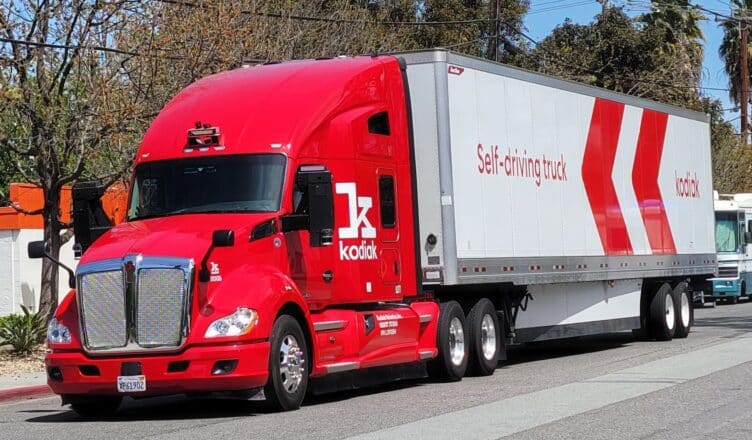Earlier this year, autonomous vehicles took center stage at the Consumer Electronics Show in Las Vegas as two organizations revealed ambitious plans.
Tech Company Aurora Innovation announced it would launch its first completely driverless trucks by the end of 2024. Kodiak Robotics also debuted a self-driving truck with an upgraded suite of sensors for long-haul deliveries and freight.
These talks didn’t end there. All across the country, similar plans have been floated by companies looking to develop autonomous vehicles that operate on land, water, or even air (as evidenced by recent breakthroughs in autonomous cargo drones).
What does this rapidly evolving landscape mean for the future of bulk transport? Let’s analyze some of the most prominent opportunities and challenges.
The Benefits of Autonomous Vehicles
First, let’s look at some of the opportunities.
Countering Labor Shortages
A serious driver shortage in the last few years has left fleet managers struggling to keep up with rising demand and stricter timelines.
According to the American Trucking Association, the country faces a shortage of 174,500 drivers, primarily due to a rapidly aging workforce and a lack of enthusiasm among younger generations. Early adopters of autonomous trucks can successfully navigate this shortage and free up valuable human capital for more challenging tasks.
Similarly, with rising geopolitical concerns along crucial shipping routes, autonomous ships can enhance the safety of seafarers. Such technology isn’t too far off, either. In 2022, Mikage, the world’s first autonomous container freighter, made its debut, setting out on a 300 km journey between two Japanese ports. It gave the industry an idea of what to expect from the future of autonomous ships.
Reducing Costs and Increasing Efficiency
Roughly two-thirds of American consumable goods are moved to market by trucks. A 2018 McKinsey study indicated that the rise of autonomous vehicles can seriously impact these operations, reducing operating costs by 45% and saving the trucking industry up to a staggering $125 billion.
Furthermore, the report points out that techniques like platooning, which allows a convoy of driverless trucks to wirelessly connect to a leading manned truck, unlock greater fuel efficiencies. By the time we arrive at Level Five autonomy—likely a few years away—these efficiencies and reduced labor costs stand to reduce fleet management costs of a single truck by 45%.
At the same time, it significantly brings down carbon emissions, which is especially crucial for an industry looking to meet net-zero targets.
Enhanced Safety
Fleet telematics goes beyond enhancing preventive maintenance practices and reducing congestion: it’s a core technology driving the autonomous vehicle industry. Driverless vehicles leverage data from dozens of sensors to navigate journeys with enhanced safety and minimal human intervention.
A study by the US Department of Transportation showed that nine in 10 traffic accidents result from human error. Autonomous vehicles equipped with advanced cameras, radars, and lidars stand to significantly reduce this statistic.
A Long Road Ahead
Autonomous vehicles have shown great promise in streamlining supply chain efficiency, cutting costs, and increasing the number of hauls. But they haven’t come without their fair share of challenges.
Here are just some factors standing between the current state of the technology and widespread adoption:
Infrastructure
Better infrastructure will encourage the adoption of autonomous vehicles. There are two major aspects to this. One involves improving physical structures, such as ensuring that warehouses and factories can accommodate the shift to self-driving vehicles.
The second involves enhancing the information technology infrastructure to support real-time data collection and processing. Technologies like computer vision, the Internet of Things, and machine learning are crucial.
Regulatory Frameworks
In February this year, the federal government revealed that it wanted to place standards for self-driving commercial vehicles.
So far, policies regarding autonomous vehicles have come from local and state governments. This announcement marks the first proper involvement of the Federal Motor Carrier Safety Administration in ensuring the safe integration of autonomous vehicles on American roads. Many policies will likely focus on the training and certification of remote truck operators.
While this is a welcome first step, creating comprehensive frameworks continues to be essential to ensuring the reliable, consistent, and secure performance of AVs.
Adopting New Maintenance Practices
Developing new auto repair strategies is vital to reducing downtime and ensuring the operational efficiency of a brand-new fleet of autonomous vehicles.
The challenge lies in adopting cutting-edge preventive maintenance practices. Automotive digital twins have emerged as one promising solution. By collecting and analyzing vast amounts of data from advanced vehicle sensors, digital twins monitor fuel efficiency, durability, and more parameters to find potential faults, even in the most advanced autonomous vehicles.
The Road Ahead
This is by no means an exhaustive list of the opportunities and challenges that autonomous vehicles can have on bulk transportation. But hopefully, it provides some insight into the long road ahead.
If organizations seriously invest in tackling infrastructure, regulatory, and maintenance challenges, they will be primed to benefit from the enhanced efficiency that comes with a fleet of self-driving vehicles.






